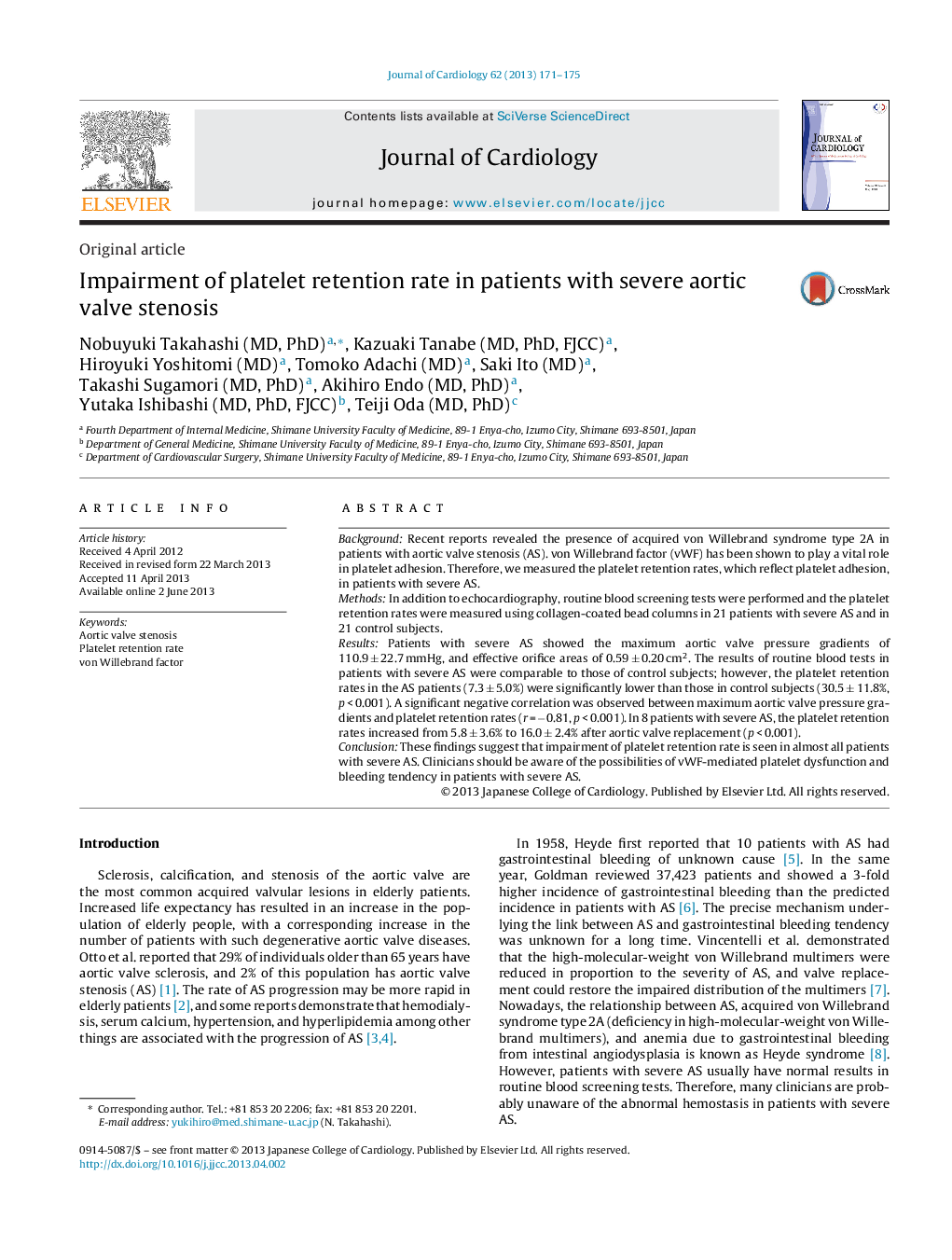| Article ID | Journal | Published Year | Pages | File Type |
|---|---|---|---|---|
| 5984312 | Journal of Cardiology | 2013 | 5 Pages |
BackgroundRecent reports revealed the presence of acquired von Willebrand syndrome type 2A in patients with aortic valve stenosis (AS). von Willebrand factor (vWF) has been shown to play a vital role in platelet adhesion. Therefore, we measured the platelet retention rates, which reflect platelet adhesion, in patients with severe AS.MethodsIn addition to echocardiography, routine blood screening tests were performed and the platelet retention rates were measured using collagen-coated bead columns in 21 patients with severe AS and in 21 control subjects.ResultsPatients with severe AS showed the maximum aortic valve pressure gradients of 110.9 ± 22.7 mmHg, and effective orifice areas of 0.59 ± 0.20 cm2. The results of routine blood tests in patients with severe AS were comparable to those of control subjects; however, the platelet retention rates in the AS patients (7.3 ± 5.0%) were significantly lower than those in control subjects (30.5 ± 11.8%, p < 0.001). A significant negative correlation was observed between maximum aortic valve pressure gradients and platelet retention rates (r = â0.81, p < 0.001). In 8 patients with severe AS, the platelet retention rates increased from 5.8 ± 3.6% to 16.0 ± 2.4% after aortic valve replacement (p < 0.001).ConclusionThese findings suggest that impairment of platelet retention rate is seen in almost all patients with severe AS. Clinicians should be aware of the possibilities of vWF-mediated platelet dysfunction and bleeding tendency in patients with severe AS.
